Nova 1 Read online
Jerry eBooks
No copyright 2013 by Jerry eBooks
No rights reserved. All parts of this book may be reproduced in any form and by any means for any purpose without any prior written consent of anyone.
Copyright © 1962 by Harry Harrison
All rights reserved.
No part of this book may be reproduced in any form or by any means without the prior written permission of the Publisher, excepting brief quotes used in connection with reviews written specifically for inclusion in a magazine or newspaper.
Manufactured in the United States of America
NOVA 1
Introduction
Harry Harrison
THE BIG CONNECTION
Robin Scott
A HAPPY DAY IN 2381
Robert Silverberg
TERMINUS EST
Barry N. Malzberg
HEXAMNION
Chan Davis
AND THIS BID DANTE DO
Ray Bradbury
THE HIGHER THINGS
J.R. Pierce
SWASTIKA!
Brian Aldiss
THE HORARS OF WAR
Gene Wolfe
LOVE STORY IN THREE ACTS
David Gerrold
JEAN DUPRES
Gordon R. Dickinson
IN THE POCKET
K.M. O’Donnell
MARY AND JOE
Naomi Mitchison
FADES & HANDS
James Sallis
THE WINNER
Donald E. Westlake
THE WHOLE TRUTH
Piers Anthony
INTRODUCTION
Some of the more enthusiastic science fiction aficionados tend to overstate the claims of this medium. Modem SF definitely does not date back to the second century and Lucian of Samo-sata, or even to the Gothic and fantastic novels of the last century. It has roots there, of course, just as it has roots in all fiction, being a part of the greater main of fiction. If it must be dated, let us think instead of the turn of the century and Herbert George Wells, that astounding man from Bromley, Kent, who appears to have started the whole thing. He could write—oh yes, indeed!—and he was aware of the impact of science upon history. That is what science fiction writers have been writing about ever since.
Our SF literature is a product of the age of reason and the era of science, and has been physically shaped by the modern narrative forms. The resemblance to the mystery story is not accidental; did not Sir Arthur Conan Doyle write them both? And it owes more than lip service to O. Henry and his characteristic short-story ending. Science fiction appeared during the greatest boom the English-language short story ever enjoyed. There were magazines galore, pulps and slicks, quarterlies, annuals, monthlies and even weeklies. This gradually changed for the worst but SF, obsessed with its own problems, merrily chuntered down its chrome-plated tracks into the future—while, all about, the short story was dying. Today the short story if not dead is certainly moribund. (Even as I write this a last major market, The Saturday Evening Post, is collapsing and gasping its last.) Yet, happily unaware of what the rest of the world is doing, the science fiction short story puffs and toots its way along.
I shall not go so far out onto a limb as to say that SF is keeping the short story alive—though at times it does appear that way. Still the science fiction magazines print at least 300,000 words of short stories every month. Nor are these stories lost to the readers once the magazines have appeared. Anthologists go through them for the year’s best anthologies, theme anthologies, anthologies of best stories from the issues of a magazine for the year, anthologies of the best novelettes, anthologies of the best anthologies of anthologies—they know no limits!—not to mention authors’ collections of their own works. Happy readers eagerly await and purchase these compounded volumes.
Now there is nothing essentially wrong with these practices; I admit to being a participant myself, anthologizing and collectioning with the best of them. But I have noticed that the material tends to be a little thin on the ground after it has been picked over a few times. There are only so many magazines, therefore just so many stories to be chosen from. What else can be done?
You hold the answer to that question in your hand. An anthology of good stories, new stories, first-class science fiction stories. Two of them have been rescued from undeserved obscurity; one from a fine, though penuriously circulated, literary quarterly, the other from a British annual. All of the others are as new as freshly minted pennies—and just as shining.
I shall not say that the science fiction magazines have taboos. But they certainly do have editorial distinctness, and perhaps the writers labor to subconscious taboos when they write for these markets. That the stories included here were to be printed first in book form seems to have had a freeing affect on the contributors’ powers. Not that the stories are overly nasty or overly sexy —or overly anything. They are just—if just is the word—excellent stories by the best science fiction writers around.
This is not an empty statement, but is one that I would swear to with right palm raised and the other on the first issue of Astounding Stories. I can truthfully say that with the more leisurely pace of the book editor, compared with the hectic monthly magazine deadlines, I have had the chance to read more, work harder, dig deeper. The results have been most heartening.
But that is, of course, up to you, the reader, to decide. I have read these stories with the utmost pleasure, and it is an equal pleasure to bring them to your attention. I sincerely hope that you will join me in enjoying them.
HARRY HARRISON
California—1962
THE BIG CONNECTION
by Robin Scott
It is simply not true, that old libel about those who can, do, those who cant, teach” Robin Scott demolishes that concept once and for all. He teaches at Clarion State College in Pennsylvania, and has organized the first summer Science Fiction Writers Workshop there. And he can write. Write well. And what is more he has the rare quality of being able to write funny, as this tale of the Hairy One and the Maha proves.
“Man, you really grooving” said the Maha, clearing a seat for himself among the pizza rinds, snips of wire, and leftover electronic junk that frothed and billowed like a frozen sea around the basement studio he shared with the Hairy One. The Maha’s appreciation of the Hairy One’s project was more than merely aesthetic; as business manager for the team, he managed to scrape a precarious living for the two of them out of his sporadic sales of the Hairy One’s experiments in “found art.”
“You dig?” acknowledged the Hairy One without looking up from his smoking soldering iron.
“I grok!”
The Hairy One selected a sixteen-inch piece of brilliant yellow number twelve PVC-insulated six-hundred-volt wire and soldered it to a brown terminal on the war-surplus AN-3/ASW Mark IV computing gunsight. He waited a moment for the silvery gloss of the molten solder to turn gray and gritty, and then tugged on the wire. He looped it in a soft curl and brought the free end down to the number seven pin on the socket of an 117L7 tube hanging upside-down in an ancient, inverted Motorola. It looked right there, and he applied solder and the iron.
“That gonna blow their minds at the exhibit,” said the Maha. “I mean, like there’s lotsa bread hangin there for us, Hairy.”
The Hairy One’s indifference was not feigned. He lived entirely for his art and shared the Maha’s enthusiasm for sales only when he ran low on raw materials. “It’s my thing,” he said, lining up a row of 200 mmfd. capacitors, light-beige ceramic wafers, and bending their leads around the ears of a General Telephone terminal strip. “I mean, it’s my bag. A guy’s gotta do his thing, no matter what. If they don’t grok, okay. If they do grok, okay.” It was an unusually long speech for the Hairy One.
The M
aha, who prided himself on his practicality, shook his thin head in exaggerated disgust. “Okay, dumdum. You do your thing, but for chrissakes keep doin’ it like that. That I can sell. It’ll be outta the gallery an’ in some rich straight’s lobby inna week. One of them swish interior decorators’ll flip for it, wait an’ see.”
The Hairy One shrugged, lost in his art. He tack-welded a pair of inverted, three-inch parabolic reflectors on the round, gray chassis of some experimental failure from the Naval Underwater Sound Laboratory which had found its way into surplus channels after costing the taxpayers $500,000. Then, after standing back to gauge the effect, he knocked one off with a blow from his hammer. The pair together were much too representational, looked like breasts, which were a drag, definitely messed up.
It stood almost seven feet tall. There was a basic mechanical structure of Bud racks, gray, crinkle enamel, but they were scarcely visible under the thick skein of cables and wires, the poxed mounds of brightly colored components scavenged from a thousand different devices bought by the barrel-full from Jake’s War Surplus and Hi-Fi store down on West Forty-fifth Street.
The Hairy One hadn’t the least conception of the original purposes of the electronic junk he used. But it was cheap, just within the allowance the Maha permitted him after the landlord, the grocer, and the pot-man had been paid. He was fascinated by the bright colors, the shiny copper and brass, the slick feel of the PVC-coated wire and the plastic tubing, the contorted shapes of the high-frequency plumbing, the exotic geometry of long, slim ruby rods in glass enclosures, of square and hexagonal and round aluminum cans, of little cylinders with stripes and dots, of the sockets with dozens of holes and the plugs—if he hunted long enough for the right ones—that slipped into them in a complex and satisfying coupling. And then there were the big glass tubes containing fairylands of little metal shapes, and the campy-looking walnut faces with antique brass dials that said “Rio” and “Paris” and “Berlin” and “SW” and “MW” and “LW.”
There were dish-shaped objects that turned ponderously back and forth on gimbals when he pushed them, and square pipes that looked like they would spout square water if he could turn them on; there were squat, black, heavy things that fit in his hand and made him think of trolls under bridges; there were lenses down which to look into prismatic blackness; there were miles of wire: bare, shiny wire, green, black, white, red, pink, purple, yellow, brown, blue wire, wire with spots on it, wire with stripes, pairs and tens and hundreds of wires twisted together as if the world had stood still with one set of ends while the universe, with the other, had rotated a dozen times.
And overall, seven feet high and ten feet long down one side, seven feet high and four feet long down the “L,” were myriads of tiny, shiny solder joints, gleaming with tropical phosphorescence.
When the Hairy One had conceived the work, deep in beautiful boo, he had prepared himself with paladin-like rigor by taking a bath, stealing a clean shirt, and working for two weeks in a Long Island Sylvania factory. They had taught him how to use a soldering iron, a screwdriver, and a socket wrench.
And he had soldered and screwed and wrenched. Every piece that could be threaded into another piece was so threaded. Every component that could be screwed onto another component was so screwed. A wire ran to every terminal, and since there were more wires than terminals, there were solder spots on the Bud racks, on the high-frequency plumbing, on the optical hardware, and on the dishes and waveguides.
There were no loose ends; everything went somewhere. Except for two wires, two big, black, cabley wires.
The Maha stood back with the Hairy One to admire. “Like I say, man, it’s too much. Outasight.”
The Hairy One nodded. He agreed. Except for those two cables. “There are these two that don’t go nowhere,” he said. “And I ain’t quite figured out . . .”
The Maha fingered his little, pointed beard, “Whyn’t you unstick ’em on their other ends and pull ’em on outta there?”
The Hairy One shook his head. “Hell, I don’t know where they go in there. If I dig in there now, I might ruin her.”
“Well, forget it, man. Don’t mess with it. Them two wires’ll come to you. Nothin’ to get uptight about.”
But the Hairy One was not to be consoled. He was an artist of integrity, and the unattached, nonfunctional wires bothered him. “They bug me,” he said, “and the gallery squares are cornin’ this afternoon to cart the mother off.”
Apprehensive lest the Hairy One do something rash to his masterpiece, the Maha said: “Cool it, Hairy. Let ’em take her. We’ll like scratch this scene an’ go see old maryjane. You can sniff a little and do the Indian thing. It’ll come to you, and we can always get inna gallery tonight.”
Reluctantly, the Hairy One agreed, and after the gallery fork-lift and truck had hauled off his masterpiece, he went with Maha to do the Indian thing.
Beautiful on pot and meditation, the solution came to him in their sparsely furnished living quarters above the basement studio. “I got it!” he said.
The Maha, sprawled on the bed, looked up from his thirty-minute contemplation of the cover of the October, 1942, Readers Digest. “I knew you’d get down to the nitty, man. What is it? Sock it to me, man.”
The Hairy One fished the frayed cord of the room’s single lamp from behind the rear seat of a 1938 Hudson Terraplane, which—with the bed—was the room’s total stock of furniture. “It’s a groove,” he said.
The Maha, his vocabulary temporarily exhausted, looked questioningly.
“Two wires, Maha! Where do they go?”
“Inna lamp, man. For the electric to get there.”
“I mean the other ends.”
“Oh, I dig. Inna plug. Inna wall.” Comprehension dawned on the Maha’s pinched face like the sun rising over the New Jersey flats. “Yeah!” he said. “For your thing! You need a plug for them two loose wires!”
“Ain’t it beautiful!” said the Hairy One, the look on his face of an Archimedes, an Alexander Graham Bell, or a man who has just whistled down a taxi in the rain, at lunch hour.
Together, they floated through the evening to West Forty-fifth Street and the electronics shops there. Jake’s was still open, and Jake himself greeted them. “Whaddaya say, Hairy One? Need another barrel or two? Got some great stuff from General Dynamics, and there’s some little, bitty boxes from the CIA.”
“Naw,” said the Hairy One. “All’s I need is a plug.”
“A plug? What kinda plug? We got all kinds plugs.”
“Gimme a big mother. Big an’ square an’ maybe black or green.”
“Gotta carry much current? How many amps it gotta carry?”
“Who knows?” The Hairy One shrugged. He did not comprehend the question. “It don’t matter. Just so it’s big an’ square an’ maybe black.”
Jake dug around in a barrel. “How’s this?” he said, holding up a two-pronged klieg. “They use this for shows. Hundert amp job.”
“Outasight, man,” said the Hairy One. “I’ll take it.”
“You got something to plug it into?” asked Jake, working the sale.
“No, man. Gimme the other half too.”
“How about connecting up the female to something. You want some cable?”
The Hairy One turned to the Maha in some doubt. “Is this square talkin’ about what it sounds like he’s talkin’ about?”
Jake sighed and spoke in carefully measured words: “The female is this here other half of the plug. You gotta have some kinda heavy cable to connect it up to the source of power so when you plug this half in there will be a adequate flow of electricity to whatever the hell you are plugging in.”
“Yeah, man. I’ll take it.”
Jake sold the Hairy One the two halves of the klieg connector and a hundred feet of single-pair number four cable. The Maha negotiated for price and paid Jake, and then he and the Hairy One, still more than a little high, boarded a crosstown bus to the deserted gallery.
After
much breaking of bushes and stepping repeatedly on each other’s hands, they managed to pry open a ground-floor window with the Hairy One’s screwdriver. Afraid to turn on lights, they fumbled in the darkness to the exhibition room containing the Hairy One’s masterpiece, and the Hairy One went to work in the dimness reflected in from Forty-second Street. The Maha helped by striking matches, one after another. Like most pot smokers, he had a good supply.
The Hairy One fastened the ends of his two vagrant wires to the lugs of the male klieg. The female half was harder to manage, but after a good deal of fumbling and cursing, he had fastened one end of Jake’s hundred-foot cable-pair into it.
“Whaddaya gonna do with the other end?” asked the Maha, striking his fortieth match.
“I don’t know. Hook it up to some electric, I guess.”
They peered around the shadowed room, but found nothing electrical except for the standard convenience outlets in the baseboard. “Maybe inna cellar,” suggested the Maha.
“Yeah. Let’s go see.” They threaded their way down a corridor and down a flight of stairs into the basement. In a dark comer, they found a wire cage with great, gray-black, ribbed, humming devices in it. The cage bore a sign: danger—high voltage—keep out!
“Volts are electric, ain’t they, Hairy?” asked the Maha.
“Yeah,” said the Hairy One. “But the sign says we ain’t allowed to go in there.”
“We can’t cop out now!” said the Maha, who was a man of great, unrecognized courage. “Look, if you hold me up there, I can reach one of them white things with the wires cornin’ out, and the other from the other side.”
The Hairy One, who was as simian in corporeal structure as he was in hirsuteness, nodded slowly, his lower lip extended in confident agreement. “Sure, man.”
The Maha, perched on the Hairy One’s shoulders, reached across the wire net of the cage and made the connections, first from one side, then from the other. He was unaccustomed to working with his hands and still a little high; it took him a long time and required much grunted advice from the Hairy One before the cable terminals were tight to the transformer lugs.

![[What Might Have Been 02] Alternate Heroes Read online](http://i1.bookreadfree.com/27/what_might_have_been_02_alternate_heroes_preview.jpg) [What Might Have Been 02] Alternate Heroes
[What Might Have Been 02] Alternate Heroes![[What Might Have Been 01] Alternate Empires Read online](http://i1.bookreadfree.com/01/what_might_have_been_01_alternate_empires_preview.jpg) [What Might Have Been 01] Alternate Empires
[What Might Have Been 01] Alternate Empires SEDUCTIVE: A Contemporary Romance Anthology
SEDUCTIVE: A Contemporary Romance Anthology A Year of Love
A Year of Love Super Daddies: A Naughty Nerdy Romantic Comedy Anthology
Super Daddies: A Naughty Nerdy Romantic Comedy Anthology Mystical Xmas: Paranormal Romance Anthology Box Set
Mystical Xmas: Paranormal Romance Anthology Box Set![[What Might Have Been 04] Alternate Americas Read online](http://i1.bookreadfree.com/06/what_might_have_been_04_alternate_americas_preview.jpg) [What Might Have Been 04] Alternate Americas
[What Might Have Been 04] Alternate Americas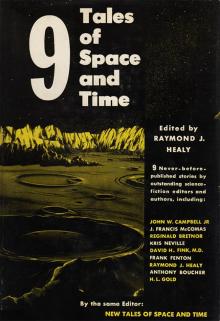 9 Tales of Space and Time
9 Tales of Space and Time Assignment in Tomorrow
Assignment in Tomorrow![[What Might Have Been 03] Alternate Wars Read online](http://i1.bookreadfree.com/i/03/16/what_might_have_been_03_alternate_wars_preview.jpg) [What Might Have Been 03] Alternate Wars
[What Might Have Been 03] Alternate Wars The Complete Dangerous Visions
The Complete Dangerous Visions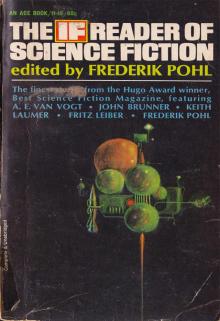 The IF Reader of Science Fiction
The IF Reader of Science Fiction Holiday in the Heart
Holiday in the Heart Torquere Press Sips and Shots
Torquere Press Sips and Shots Possess: An Alpha Anthology
Possess: An Alpha Anthology Beyond Control
Beyond Control Bad Boys Under the Mistletoe: A Begging for Bad Boys Collection
Bad Boys Under the Mistletoe: A Begging for Bad Boys Collection Hugo Awards: The Short Stories (Volume 3)
Hugo Awards: The Short Stories (Volume 3) The Second IF Reader of Science Fiction
The Second IF Reader of Science Fiction Astounding Science Fiction Stories Vol 1
Astounding Science Fiction Stories Vol 1 What Happens Over Spring Break: A Short Story Anthology
What Happens Over Spring Break: A Short Story Anthology eSteampunk Vol. 01 No. 02
eSteampunk Vol. 01 No. 02 SHADOWRUN: Spells and Chrome (shadowrun)
SHADOWRUN: Spells and Chrome (shadowrun) Dark Tales
Dark Tales Getting Schooled (Craving #9)
Getting Schooled (Craving #9) The Hellfire Book of Beltane Volume One
The Hellfire Book of Beltane Volume One The Alpha's
The Alpha's The Future Is Short
The Future Is Short From the Heart: A Valentine's Day Anthology
From the Heart: A Valentine's Day Anthology Reckless: A Bad Boyz Anthology
Reckless: A Bad Boyz Anthology LOL #3 Romantic Comedy Anthology
LOL #3 Romantic Comedy Anthology A Christmas Seduction: A Regency Anthology
A Christmas Seduction: A Regency Anthology All a Cowboy Wants for Christmas
All a Cowboy Wants for Christmas Hugo Awards: The Short Stories (Volume 2)
Hugo Awards: The Short Stories (Volume 2) The Golden Age of Science Fiction Novels Vol 01
The Golden Age of Science Fiction Novels Vol 01 The Sirens of SaSS Anthology
The Sirens of SaSS Anthology Mistletoe & Kisses
Mistletoe & Kisses Explorers of Space
Explorers of Space Time Travel Omnibus Volume 2
Time Travel Omnibus Volume 2 Dead Science: A Zombie Anthology
Dead Science: A Zombie Anthology Beer Goggles Anthology
Beer Goggles Anthology Apexology: Horror
Apexology: Horror Heat Wave: A Summer Loving Anthology
Heat Wave: A Summer Loving Anthology Fall in Love
Fall in Love Love Under the Mistletoe
Love Under the Mistletoe Hook & Ladder 69: Eighteen Authors...One Sexy Firehouse.
Hook & Ladder 69: Eighteen Authors...One Sexy Firehouse. LOL #2 Romantic Comedy Anthology - Volume 2 - Even More All-New Romance Stories by Bestselling Authors (LOL Romantic Comedy Anthology #2)
LOL #2 Romantic Comedy Anthology - Volume 2 - Even More All-New Romance Stories by Bestselling Authors (LOL Romantic Comedy Anthology #2) Off the Beaten Path: Eight Tales of the Paranormal
Off the Beaten Path: Eight Tales of the Paranormal![Best New Zombie [3] - Best New Zombie Tales, Vol. 3 Read online](http://i1.bookreadfree.com/i/03/25/best_new_zombie_3_-_best_new_zombie_tales_vol_3_preview.jpg) Best New Zombie [3] - Best New Zombie Tales, Vol. 3
Best New Zombie [3] - Best New Zombie Tales, Vol. 3 The Golden Age of Science Fiction Novels Vol 05
The Golden Age of Science Fiction Novels Vol 05 Alphas of Sin
Alphas of Sin Halloween Spirits: 11 Tales for the Darkest Night
Halloween Spirits: 11 Tales for the Darkest Night Night Shift 2
Night Shift 2 Ellora's Cavemen: Jewels of the Nile II
Ellora's Cavemen: Jewels of the Nile II Hot for the Holidays (21 Holiday Short Stories): A Collection of Naughty and Nice Holiday Romances
Hot for the Holidays (21 Holiday Short Stories): A Collection of Naughty and Nice Holiday Romances Of Heaven and Hell
Of Heaven and Hell 12 Christmas Romances To Melt Your Heart
12 Christmas Romances To Melt Your Heart '90s Playlist (Romance Rewind #1)
'90s Playlist (Romance Rewind #1) Bleed Blue 69: Twenty-Five Authors…One Sexy Police Station
Bleed Blue 69: Twenty-Five Authors…One Sexy Police Station The Cthulhu Mythos Megapack (40 Modern and Classic Lovecraftian Tales)
The Cthulhu Mythos Megapack (40 Modern and Classic Lovecraftian Tales) Nova 3
Nova 3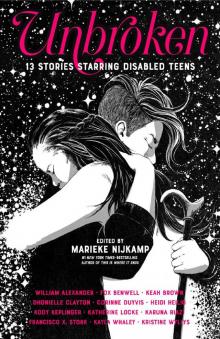 Unbroken: 13 Stories Starring Disabled Teens
Unbroken: 13 Stories Starring Disabled Teens Dead Men (and Women) Walking
Dead Men (and Women) Walking Sweet Seduction
Sweet Seduction Brothel: The Magnolia Diaries
Brothel: The Magnolia Diaries Rogues (A Boys Behaving Badly Anthology #1)
Rogues (A Boys Behaving Badly Anthology #1) Best New Zombie Tales, Vol. 3
Best New Zombie Tales, Vol. 3![The Hellfire Bo [1] - The Hellfire Book of Beltane Volume One Read online](http://i1.bookreadfree.com/i1/04/06/the_hellfire_bo_1_-_the_hellfire_book_of_beltane_volume_one_preview.jpg) The Hellfire Bo [1] - The Hellfire Book of Beltane Volume One
The Hellfire Bo [1] - The Hellfire Book of Beltane Volume One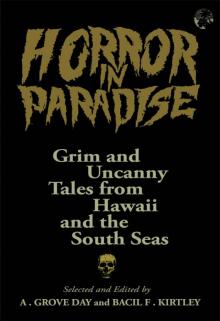 Horror in Paradise
Horror in Paradise Time Travel Omnibus Volume 1
Time Travel Omnibus Volume 1 More Than Words: Stories of Courage
More Than Words: Stories of Courage River Walk: Ten Kinky Collaborations
River Walk: Ten Kinky Collaborations F*cking Awkward
F*cking Awkward Hearts of England
Hearts of England The Golden Age of Science Fiction Novels Vol 03
The Golden Age of Science Fiction Novels Vol 03 Drunk in Love
Drunk in Love Up and Coming: Stories by the 2016 Campbell-Eligible Authors
Up and Coming: Stories by the 2016 Campbell-Eligible Authors Descended from Darkness: Apex Magazine Vol I
Descended from Darkness: Apex Magazine Vol I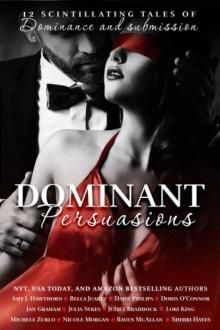 Dominant Persuasions Anthology: 12 Tales of D/s, Where Mastery Meets Passion
Dominant Persuasions Anthology: 12 Tales of D/s, Where Mastery Meets Passion The Golden Age of Science Fiction Novels Vol 04
The Golden Age of Science Fiction Novels Vol 04 Passion in Portland 2016 Anthology
Passion in Portland 2016 Anthology Men of Mayhem
Men of Mayhem The Dirty Anthology
The Dirty Anthology Hot For Teacher
Hot For Teacher Nova 2
Nova 2 eSteampunk Vol. 01 No. 03
eSteampunk Vol. 01 No. 03 Afternoon Tea Mysteries Vol Three
Afternoon Tea Mysteries Vol Three Romance in the Rain
Romance in the Rain Tales From the Crossroad Volume 1
Tales From the Crossroad Volume 1 A Very Alpha Christmas
A Very Alpha Christmas Nova 1
Nova 1 Once: A Collection of Sinfully Sexy and Twisted Tales
Once: A Collection of Sinfully Sexy and Twisted Tales Nuts About You: A Testicular Cancer Anthology
Nuts About You: A Testicular Cancer Anthology From the Street (shadowrun stories)
From the Street (shadowrun stories) Box of 1Night Stands: 21 Sizzling Nights
Box of 1Night Stands: 21 Sizzling Nights Descended from Darkness: Vol II
Descended from Darkness: Vol II Pink Shades of Words: Walk 2016
Pink Shades of Words: Walk 2016 The Art of Taking Chances
The Art of Taking Chances The Butterfly Box_A SASS Anthology
The Butterfly Box_A SASS Anthology Harlan County Horrors
Harlan County Horrors![Afternoon Tea Mysteries [Vol Three] Read online](http://i1.bookreadfree.com/i2/04/12/afternoon_tea_mysteries_vol_three_preview.jpg) Afternoon Tea Mysteries [Vol Three]
Afternoon Tea Mysteries [Vol Three] The Golden Age of Science Fiction Novels Vol 02
The Golden Age of Science Fiction Novels Vol 02 Ellora's Cavemen: Jewels of the Nile III
Ellora's Cavemen: Jewels of the Nile III